Contributed By
Published
A discussion of ethics in the Panzer Dragoon world, ranging from anthropocentric stances that place humans at the centre of concern to ecocentric views which put the environment first.
Contents
Introduction
Panzer Dragoon Saga was set apart from the multitude of other RPGs released at the same time by its emphasis on portraying a living ecosystem. Unlike other games which featured monsters that were added simply for aesthetic or gameplay reasons, the creatures in the Panzer Dragoon story felt like they lived in their environment, an artificial yet seemly natural ecosystem dreamt up by a civilisation long gone from the world. Animals lived in relation to one another and their environment, with the human animal but one creature struggling to survive in that ecosystem, rather than living above and beyond it.
With human beings barely surviving on a daily basis, it is no wonder that environmental themes take a prominent place in Panzer Dragoon Saga’s story. This article aims to outline the main ethical ideologies in the Panzer Dragoon series, particularly anthropocentrism and ecocentrism, and to a lesser extent sentiocentrism. My aim to outline what these positions are, and describe some of the ethical positions that are based on them, held by both by factions within the Panzer Dragoon world and philosophers in ours. I hope to present each ideology fairly (if only briefly) and leave you with an interest in learning more.
Anthropocentrism
Anthropocentrism is the view that human beings are the centre of value, and that all assessment of value ought to be seen from a human perspective. Although the environment and other beings living in relation to humans may be valued, those who take an fully anthropocentric view of value will only view the value of non-human entities as instrumentally valuable. Under a fully anthropocentic view, outside of utility to humans, the environment and other sentient beings have no inherent value.
The Empire can be seen as a faction which was quite clearly anthropocentric. The Seventh Emperor saw himself as the rightful heir of the ancient human civilisation. The Soldier Guide states outlines his goal:
We will use the power of the ancient ones to cleanse the world of the monsters and return humans to their former glory. Expanding the Empire, including securing as many ruins and machines as possible, will achieve this goal.

The Imperial Academy believed in expanding the Empire, even at the expense of the creatures and their environment that stood in its way. Shortly before his death, the Seventh Emperor captured Azel and intended to use her to control the Tower, proclaiming that he now controlled mankind’s future.
The resurrected Empire in Panzer Dragoon Orta shared a similar vision. When Orta arrived at the Imperial Capital, the grand admiral proclaimed that, “soon, with the power of the dragonmares, the world shall once again belong to man!” It can be concluded from this that both incarnations of Empire put the expansion of their human civilisation ahead of anything that stood in their way, particularly the environmental balance that the Towers had created.
The people of Zoah also held an anthropocentric view, as evident in their religion. Zoah’s Book of Genesis states that:
Everything we see with our eyes, with one lone exception, was created in this time. Water, plants, and beasts, became provisions for humans. The ruins were homes for Gods and humans. Monsters were servants of people.
This shows that much of what was created was done so for humanity’s instrumental use, an anthropocentric view of the world. Zoah’s religion mirrors the anthropocentrism found in many real world religions. For example, in the Judeo-Christian tradition, humans are placed as the centre of God’s creation. In Genesis, God says of humans, “…let them have dominion over the fish of the sea, and over the fowl of the air, and over the cattle, and over all the earth, and over every creeping thing that creepeth upon the earth.”1 Some have argued that the word “dominion” was too strong, with the correct translation being “stewardship”. If indeed stewardship is the correct word, then this would not necessarily entail a wholly anthropocentric position. Intentional or not, it is important to note that religion has been (and continues to be) used to justify anthropocentric ideologies.

The Seekers in Panzer Dragoon Saga may have also held an anthropocentric ethic, although it is less clear to what extent. Like the Empire, their purpose was to restore the world back into the hands of humanity, but beyond this it’s unclear how much value Gash’s Seekers placed in humans versus the non-human world. Gash tells Edge that, “We will reclaim this world” referring to his plans for humanity to overthrow Sestren. He also states that, “For man to control his own destiny, we need Azel.” This implies at least a heavy interest in elevating humans above their place of continual struggle to survive, even if it does not confirm that the Seekers held an entirely anthropocentric value system. After the Towers were destroyed, the Seekers continued to focus on elevating humans. Emid tells Iva that, “We search the land trying to find ways to make it inhabitable for people. It leads to a lot of danger and a lot of hardship, but it’s our duty.”
To grasp a better understanding of the Seekers, we can look at who influenced their worldview. The Seekers were the ideological descendants of the Technology Destruction Faction, a group in the Ancient Age who opposed the Towers and their environmental control scheme. This faction too held an ethic focused on humans. At the end of Panzer Dragoon Saga the dragon program that the Destruction Faction created tells Edge of his goal:
I exist to lead the Divine Visitor, to break the spell of the Ancient Age, and to give humans control of their own destiny.
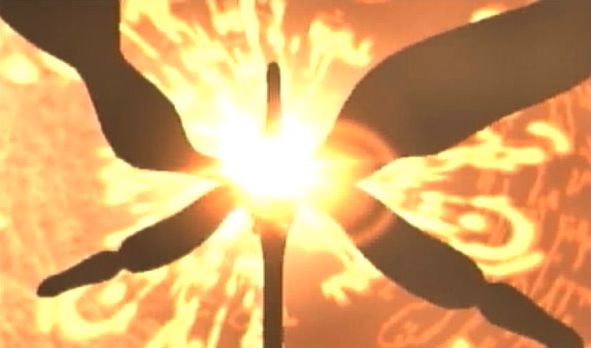
Even though the Towers were created to control and preserve the environment, the Technology Destruction Faction were prepared to shut down this network, even if that led to environmental disaster. Perhaps they had taken the environment into account, however a further examination of their ideology suggests that there were factors that overrode environmental concern. A guidebook translation states that they believed that, “one ought not to interfere with the laws of nature, but rather leave things to progress as they would.”2 Another page of the guidebook states that their ideology included a human-centric principle that, “the future of humanity ought to be decided by humankind.”3. Two principles can be found in these passages, (1) what is natural is what is right, and (2) human interests ought to be decided by humans. It seems that the Destruction Faction’s ideology was based around a naturalistic ethic - both for humanity and the environment - but with an emphasis of humans controlling their own future, even if that meant creating a dragon program which would ultimately sabotage their rival’s environmental efforts. However, as I shall discuss later in the article, this does not necessarily commit the Destruction Faction to a wholly anthropocentric position.
Ecocentrism
Ecocentric views put the environment at the centre of value. Inherent value is extended to non-human species, ecosystems, and other aspects of nature. Sentience is unimportant to a fully ecocentric value system, as are the interests of humans, other than in their role to play in the overall value of the ecosphere. It should be noted that value systems that take an ecocentric position are not always fully ecocentric, so it can be helpful to imagine a continuum with anthropocentrism at one end and ecocentrism at the other. Value systems will often fit somewhere along this continuum, rather than at the extremes at either end.
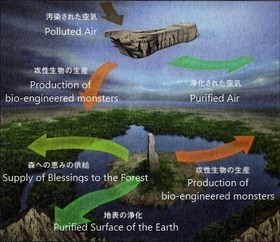
One example of an ecocentric ethic that embraces the inherent worth of life regardless of its instrumental use to human beings is a position called deep ecology. Deep ecologists take a holistic view of the world, arguing that nature is a complex web of interconnecting relationships, with all organisms dependent on each other. They claim that whole ecosystems have value, and the living environment as an entirety ought to be respected, with humans being but one part of it. Essentially, deep ecology endorses “biospheric egalitarianism”.4 With their focus on the environment, deep ecologists may advocate wilderness preservation or human population control. It is tempting to label the Preservation Faction as deep ecologists with their emphasis on maintaining the environment as a whole, rather than individual humans within it. It appears, however, that the Preservation Faction’s Tower control system was ultimately designed for human benefit, so they may not qualify as fully ecocentric deep ecologists. Craymen outlines the Preservation Faction’s ecocentric ethic, which he agrees with, when Edge arrives at the Tower.
The path to Uru. That is the purpose of these ruins, or what we call the Tower. It creates a habitable environment for an already dead planet… To this day, we’re protected by the power of the Ancient Age. I’m sure you’ve grown to loathe the monsters. They have a purpose. Essentially, they act as the caretakers of the ecosystem. Their actions, all, are to protect mankind from extinction.

Sestren, the Towers, the monsters, and the rest of the technology created by the Technology Preservation Faction were built for the interests of maintaining the ecosystem. The view is not entirely ecocentric - after all, the system was set up to protect humanity (or perhaps a subset of humanity), so it is at least partially anthropocentric. But the system itself has no interest in the well-being of individual humans within that system. It places its focus directly on the environment, rather than on individuals within the environment. Gash scathingly explains this ideology to Azel by saying of Craymen that, “He died as part of his vision, as part of the Tower’s cycle. Food for the monsters you awakened.”
Craymen explains to Edge how the Preservation Faction’s ideology differs from that of the Empire’s:
Even in your short involvement with the Empire, you must have learned. Their actions are nothing but an endless waste of resources, war, and death. …Even if the Tower restores the world, the humans will just consume and destroy it again. Someone, or something, must take control of everything. Or we shall continue to destroy ourselves forever.
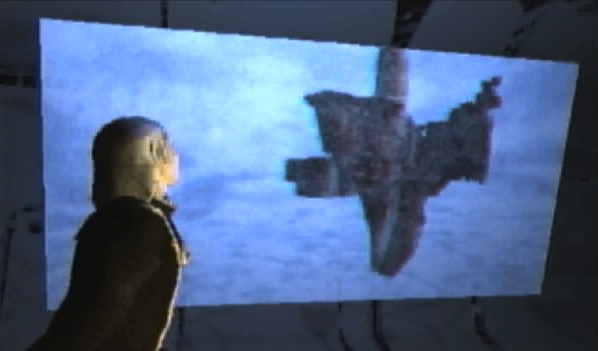
Craymen is pointing out how the Empire’s anthropocentric view of constantly pursuing human interests has led them to overlook the environmental value that is being destroyed at its expense. He argues that humans need to adopt the Preservation Faction’s ecocentric approach in order to preserve the environment, giving up the freedom to expand in order for there to be enough resources to go around. Tower Report 3 outlines the Preservation Faction’s ideology further; the Towers were not just created to stop resources being wasted but to slow human population growth in the first place by placing environmental interests first, before human interests.
At the same time the Towers purify the air, water, and soil to enlarge inhabitable areas, they employ monsters to remove elements that threaten the environment, including humans.
So, the Preservation Faction’s Towers functioned in a way that put the environment ahead of humans within it, but ultimately these Towers were designed for human benefit. Does this make the Preservation Faction ecocentric or anthropocentric? I would place them somewhere on the continuum in between, but leaning towards the ecocentric end of the spectrum in the execution of their philosophy.
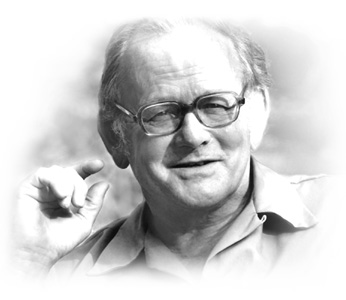
As human impact on the environment becomes more evident, environmentalists in the real world have called for a ecocentric approach to ethics, although most don’t go as far as advocating for a technological population control system. The ecologist Garrett Hardin wrote in his paper “The Tragedy of the Commons” that, “the only way we can preserve and nurture other and more precious freedoms is by relinquishing the freedom to breed, and that very soon.”5 Hardin was not talking about a solution as drastic as creating a horde of biomonsters to curb the human population, but his stance does necessitate state intervention, such as fines to those who have more than the optimum number of children. He argues that since each person acting in their own self-interest will continue to use resources if they are available, the Earth will continue to be overexploited and the average well-being for everyone will go down. By looking at the available resources, the state could determine an acceptable level of population growth and regulate based on that number. Mutual coercion, mutually agreed upon, as he calls it. While such a position could be seen as in line with the Preservation Faction’s goal of controlling the population, if such a system was decided upon by humans then it is not out of the question to align it with the Destruction Faction’s goal of humans deciding their own future (so long as it was a human controlled solution rather than a technologically controlled one). Whether the Destruction Faction would have adopted such a strategy in practice is another matter.
Sentiocentrism
A further view is sentiocentrism, the view that sentient individuals are the centre of moral concern. Unlike ecocentrism, sentience is the baseline, so plants and rocks do not have any non-instrumental value, but unlike anthropocentrism other sentient creatures have value beyond their instrumental value to humans. As with ecocentrism, it is possible to imagine a continuum between anthropocentrism and sentiocentrism, with different ethical positions being placed along the scale.

It seems that the Wormriders were one faction who leaned towards a sentiocentric ethic (or at least more sentiocentric than the other factions of the Panzer Dragoon world). Unlike the Empire who continually saw the monsters in their environment as a threat, the Wormriders learnt to co-exist with the creatures within it. Instead of killing the baldors, they rode them. Instead of viewing lathums as repulsive monstrosities (Gash referred to the lathum that he and Edge encountered as “the most disgusting thing alive”), the Wormriders built their home on the back of one. Panzer Dragoon Orta’s encyclopaedia states that:
Where the Empire is constantly trying to destroy the bio-engineered creatures to make the world safe for human expansion, the Wormriders believe that people can exist alongside these creatures, and sometimes, even benefit by domesticating some types of creatures. This has led most Imperials to look down upon the Wormriders as primitive and disgusting.
It is important to note that this does not confirm where the Wormriders sat on the continuum between anthropocentrism and sentiocentrism. They may still have leant towards anthropocentrism if they saw coexisting alongside the bio-engineered creatures as beneficial to them in a primarily instrumental way. However, we do know from Panzer Dragoon Orta Sub Scenario Mission 2, “The Fury of Mobo”, that Mobo placed considerable non-instrumental value in the baldor he rode.
Hamah-hamah was Mobo’s mount, and life-long friend. The tamed Baldor was now a short distance from Mobo, its tattered body quivering in the snow of the icy fields. Mobo reached out a hand to comfort the ailing beast. “Poor thing, look what they did to you…”
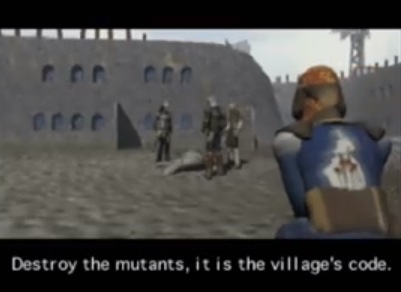
Although most of the major factions in the Panzer Dragoon story do not appear to show any signs of taking a sentiocentric view, there is evidence that individual dragon riders held value in the interests on non-human creatures beyond their utility to human beings. An obvious example of this is Lundi, who was told to kill the young coolia Lagi, but couldn’t bring himself to do so. The villagers of Elpis did not appear to place much value on the well-being of their coolias, brutally killing them with arrows because they could not be sold. It could be argued that Lundi only saved Lagi’s life for his own self-centred reasons (because he hoped Lagi would grow into the dragon of legend), yet as their journey progressed, Lundi grew to have a deep bond with this sentient creature. In Dragon Book 3, Lundi wrote of Lagi that, “I only hope that his heart hasn’t changed, because Lagi is all that I have left.” Clearly he had come to place great value in the dragon. Later, after the dragon left him at the end of Panzer Dragoon Zwei, Lundi referred to Lagi in his Old Diary as “my friend”.
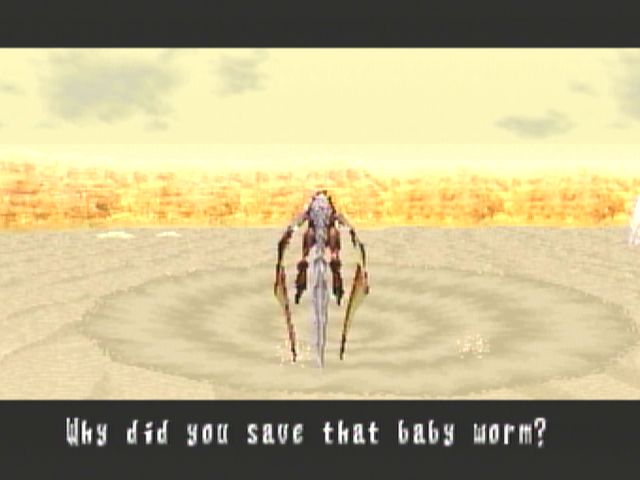
Similarly, Edge placed some value on the well-being of other sentient creatures he encountered on his journey. When crossing the Garil Desert with Gash, Edge encountered a worm trapped in a pool of quicksand, fighting for its life. Using the dragon’s lasers, Edge knocked the worm out of the quicksand to safety. Gash, indifferent to the well-being of the worm, asked Edge why he had bothered to save its life and told him that he should have left it alone. Edge responded angrily, telling Gash, “It didn’t deserve to die like that!”
Since proponents of sentiocentrism place sentience as the baseline for value, a coherent sentiocentric position entails respect for the interests of all sentient beings. The discrimination based on species membership that anthropocentrists support is known as speciesism. To avoid speciesism, philosophers such as Peter Singer argue for the equal consideration of the interests of all sentient beings.6 Although speciesism is not a major theme in the Panzer Dragoon story, an example of it can be found in the latest incarnation of the series, Panzer Dragoon Orta. Chained in a cage by the Seekers, Orta was treated as a weapon. She tells the Wormrider leader, Elder Ponta, of how the Seekers thought of her.
They were all afraid of me… They said that I was the harbinger of destruction… I was chained in a cage and told that I would stay there until I was needed for war… I have no family… no friends. I am alone in this world!!
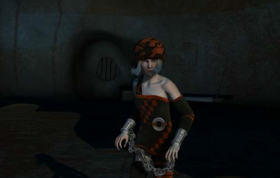
Although the ill-treatment of Orta by the Seekers can be seen as the result of misplaced fear, it can also be seen as an example of speciesism and holding to an anthropocentric view of value. Since Orta was not entirely of the human species (she was a half drone), the Seekers treated her as a mere object, a weapon to be used rather than a being who was inherently valuable. Like a factory farmed battery hen, she was a mere resource to be used to further human ends. Similarly, the Empire treated Orta as an insignificant other based on her species. When Orta encountered the dragonmare squadron at the end of the fourth episode of Panzer Dragoon Orta, Evren declared, “She’s only a Drone! Show no mercy!”
Orta’s own empathy towards other sentient beings is evident at the end of the fifth episode of Panzer Dragoon Orta. Upon defeating the els-enora, Orta realised that the creature had children. Although the els-enora had attacked her, Orta regretted her actions after seeing the damage that she had done to the els-enora family. When Abadd showed no mercy to the els-enora, Orta was angered by his lack of empathy. Orta’s empathy towards other creatures may have stemmed from her own mistreatment by the Seekers. Orta could be viewed as something of a sentiocentrist, putting herself in the place of other sentient beings, and viewing them as having worth in themselves independent of their value to human interests or environmental stability.
Conclusion
The values discussed in this article only scratch the surface of the complex relationship between humans, other sentient creatures, and the environment. If I have been successful, I will have conveyed some of the values held by the people of the Panzer Dragoon world and given readers a taste for the complexities of the underlying ideologies that are prevalent in the series. As humans become increasingly aware of their relationship with the non-human world, the need for a critical examination of our existing values becomes all too apparent. In the real world we face rapid resource depletion and human overpopulation, to name just two issues raised in Panzer Dragoon Saga. It is through deep and insightful stories like those in the Panzer Dragoon series that we can play out the ramifications of adopting the various ethical positions and then hopefully go beyond the fiction in reflecting on our own values.
References
-
Genesis 1:26, King James Bible (Cambridge Ed.) ↩
-
Andrew Brennan, Yeuk-Sze Lo, “Environmental Ethics”, Stanford Encyclopedia of Philosophy, accessed September 15, 2012. ↩
-
Garrett Hardin, The Tragedy of the Commons ↩
-
Peter Singer, All Animals Are Equal ↩
